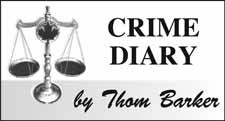A few years ago, few people had ever heard of drones and, if they had, it was in terms of military operations. Today, you can buy one with an embedded camera on board for less than $100. They promise to be one of the truly hot items of the Christmas season.
It is one of those phenomena that catch regulators by surprise. Transport Canada made a first step toward rectifying that situation in October and, as Christmas approaches, the federal government is stepping up its public awareness campaign.
Recreational Unmanned Air Vehicles (UAV) and Unmanned Air Systems (UAS) as Transport Canada calls them, are basically toys, but they are not. They are increasingly sophisticated pieces of machinery. And if they are less than 35 kilograms and not being used for commercial purposes no training or licensing is required.
The problem is anything that flies around in airspace can be a potential hazard. There are increasingly complaints from pilots of UAVs being flown near passenger planes.
In an attempt to mitigate those hazards, regulations now include not flying within eight kilometres of airports or more than 90 metres off the ground. They are also prohibited over populated areas, near roadways and vehicles and over military bases, prisons and forest fires.
For UAVs more than 35 kilograms and those less than 25 kilograms that are used for commercial purposes, a Flight Operation Certificate is required unless the operator qualifies for an exemption. It is important to understand the requirements because not meeting them can result in pretty hefty fines of up to $5,000 for an individual and $25,000 for a corporation.
At this point you may think, this is supposed to be Crime Diary, not Regulations Diary.
The thing is, operators could quite easily find themselves running afoul of the Criminal Code. The government's awareness campaign does not specify which sections might apply, but I can see at least a few different areas that could come into play.
At the lower end of the scale is invasion of privacy. At the very least, a case could likely be made that flying around a person's residence falls under Section 180(2) wherein "every one commits a common nuisance who does an unlawful act or fails to discharge a legal duty and thereby… (b) obstructs the public in the exercise or enjoyment of any right that is common to all subjects of Her Majesty in Canada."
If while flying near a person's home the operator causes damage, he might be liable for mischief charges. If he thereby endangers the residents or causes physical injury, that could be an indictable offence, which carries prison time of up to two years.
If the invasion goes further and the operator takes pictures or videos and then distributes those, there may be a whole slew of other legislation that is applicable.
There is also Section 77(c) which makes it an indictable offence to cause "damage to an aircraft in service that renders the aircraft incapable of flight or that is likely to endanger the safety of the aircraft in flight."
Finally, Section 249(c) states it is an offence to operate "an aircraft in a manner that is dangerous to the public, having regard to all the circumstances, including the nature and condition of that aircraft or the place or air space in or through which the aircraft is operated."
Furthermore, if by that dangerous operation others are injured or die, penalties range to 14 years in prison.
I am not a lawyer, so I may be somewhat off base with some of this speculation, but it illustrates my point, which is that playing with that wonderful Christmas present could have some serious ramifications if the rules aren't followed.




